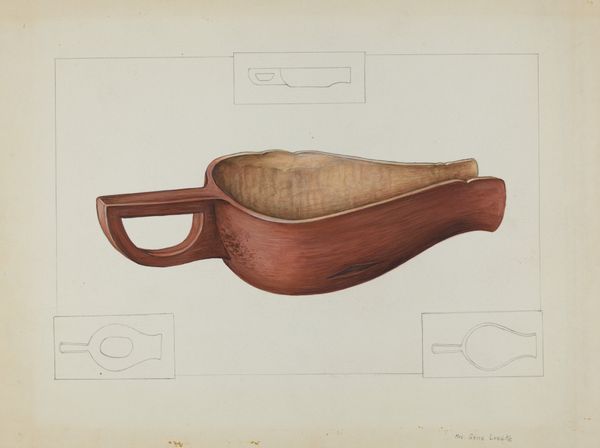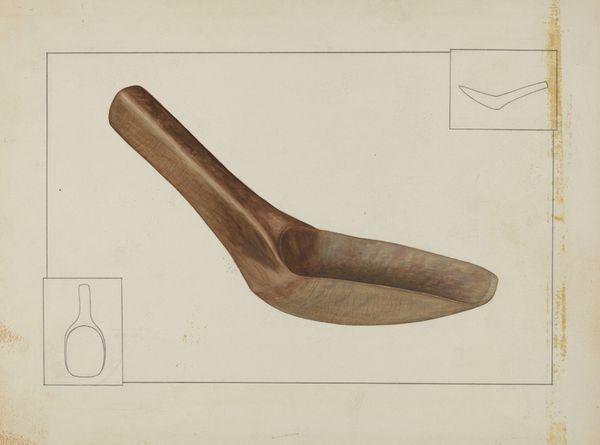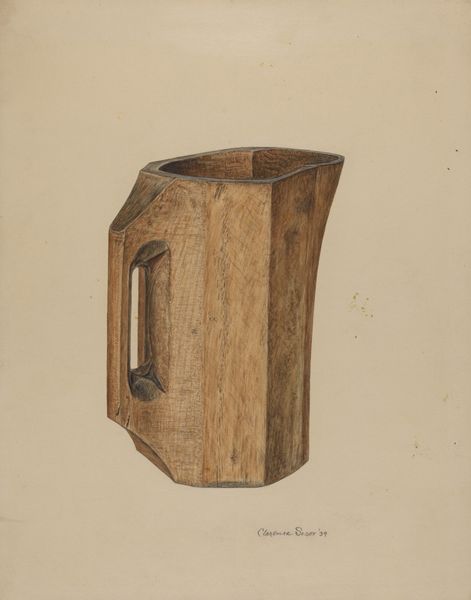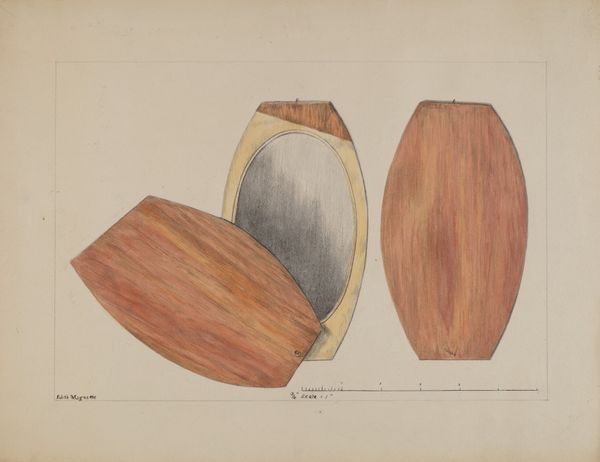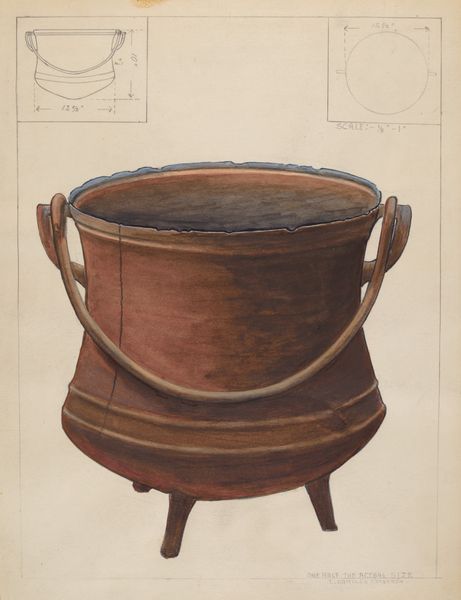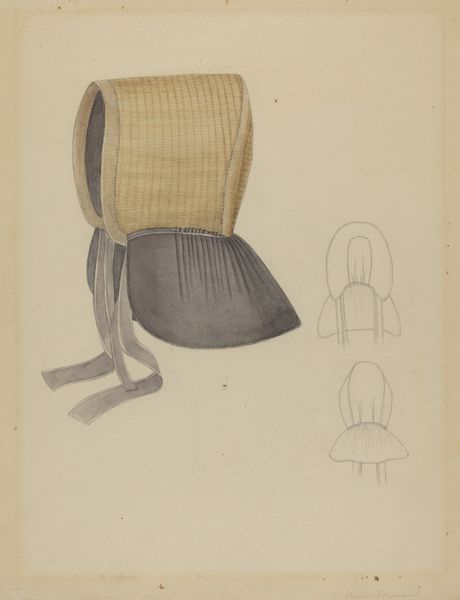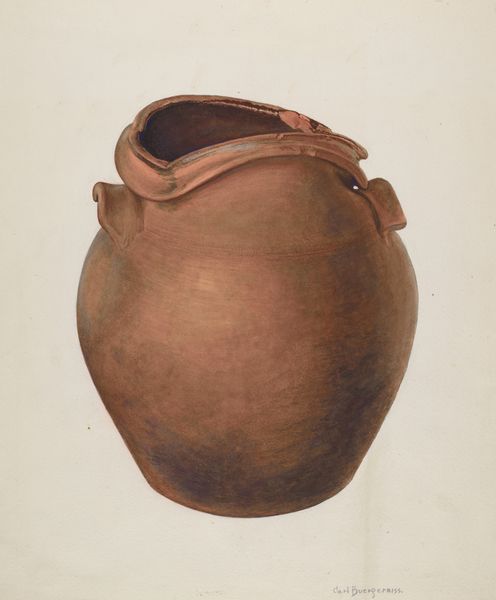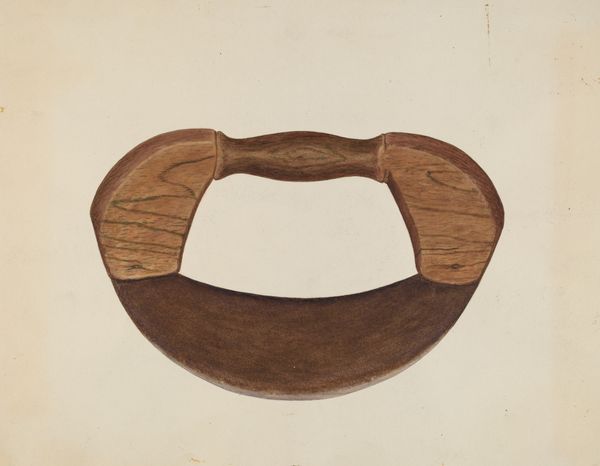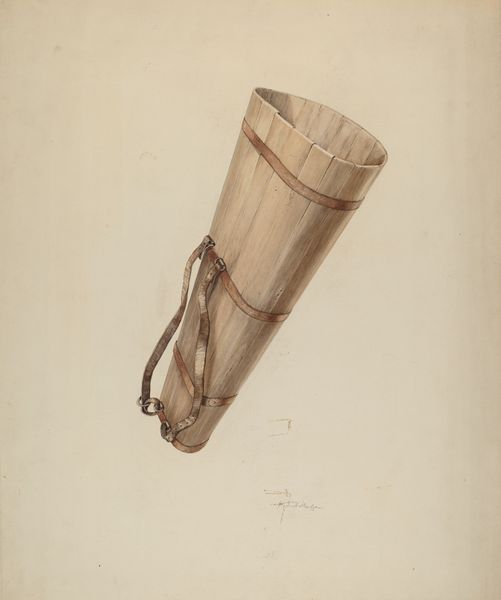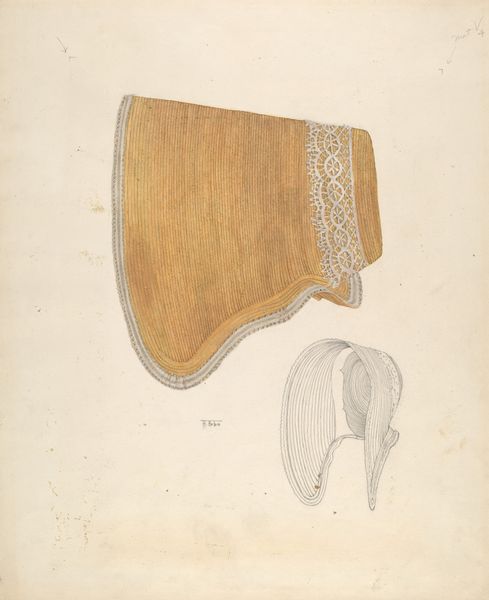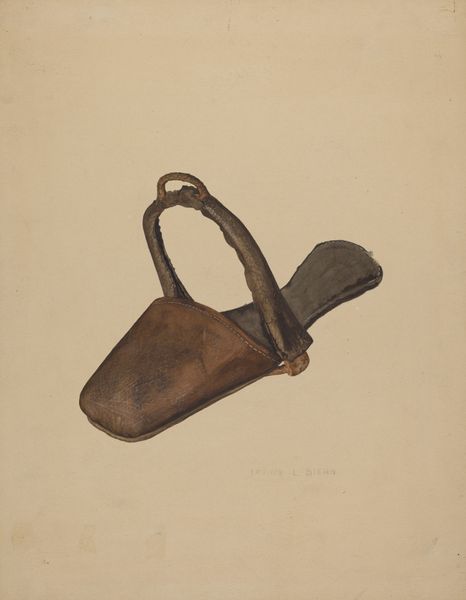
drawing, pencil
#
drawing
#
pencil drawing
#
pencil
#
realism
Dimensions: overall: 35.5 x 28 cm (14 x 11 in.) Original IAD Object: 6 3/8" wide; 7" high; 5 1/2" thick
Copyright: National Gallery of Art: CC0 1.0
Curator: Here we have Manuel G. Runyan's pencil drawing, "Saddle Stirrup," created around 1938. What’s your initial impression? Editor: Well, beyond the somewhat drab palette, there’s a quiet stillness to it. The wood grain is so meticulously rendered that it almost feels tactile. It grounds the work in a sense of realism. Curator: Absolutely. Runyan was documenting everyday objects, particularly tools and implements that reflected rural American life during the Depression era. This saddle stirrup speaks to the significance of the equestrian lifestyle and the work and social structures tied to ranching. It’s a quiet ode to the American worker. Editor: The composition also guides the eye. Note how Runyan’s careful shading creates a powerful sense of volume, almost tricking you into perceiving 3-D space on a flat plane. I think the artist is very aware of formal relationships here. It creates a strong focal point. Curator: That’s true, but consider also that for many laborers and ranchers, the saddle wasn't merely an object—it was an extension of their own bodies, a crucial instrument in their livelihoods. It signifies the historical exploitation of both humans and animals in the agrarian, then industrial, landscapes. Editor: An intriguing interpretation. The stirrup becomes a visual metaphor. Still, let's acknowledge the artistry on display. See how the subtle variations in line and tone really give dimension and weight to the object, lifting it from mere documentation. Curator: The way he frames the main object with almost ghosted versions offers an interesting perspective too. I read that as a commentary on labor—what is exact, valued, and foregrounded and what becomes almost invisible or cast to the side? Editor: It's undeniable that Runyan gives weight to a familiar object by way of simple formal strategies. It's hard not to find some intrinsic value in its construction. Curator: Yes, even as we acknowledge the complexities it presents. Seeing this in its socio-historical context offers multiple ways to explore art and its relationship to labor, society, and identity.
Comments
No comments
Be the first to comment and join the conversation on the ultimate creative platform.
